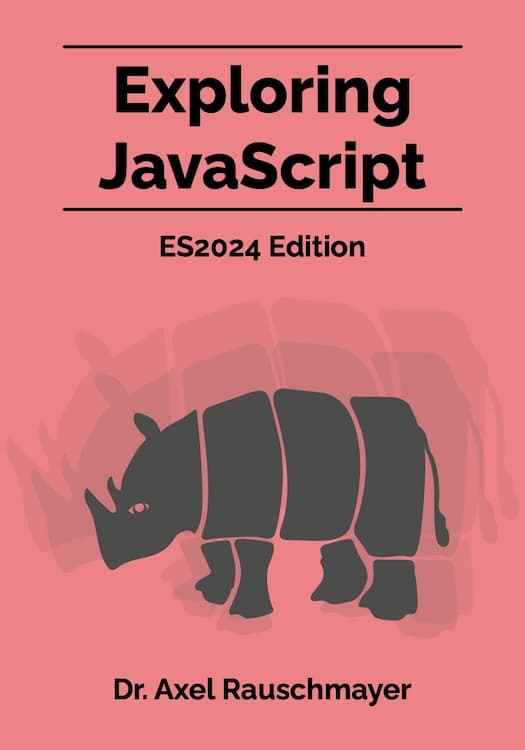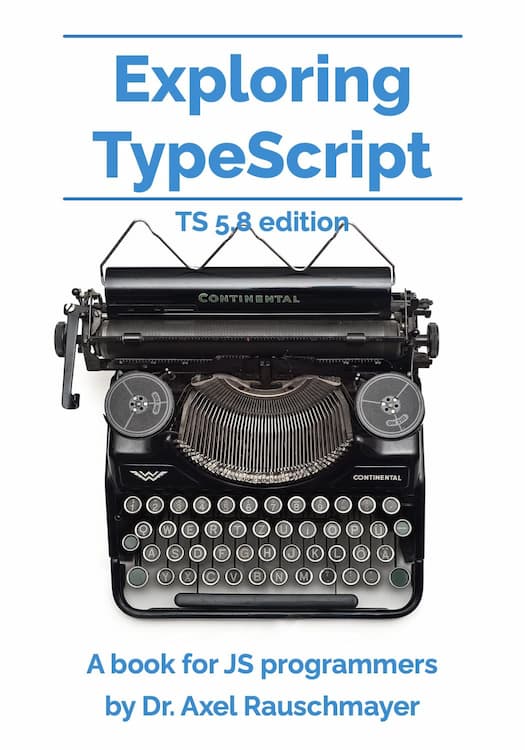2014-01
ECMAScript 6: TC39 meetings, March–November 2013
[2014-01-17] esnext, tc39, dev, javascript
TC39 [1] is the committe that currently plans ECMAScript 6 (code-named ECMAScript.next), the next version of the JavaScript language standard. In this blog post, I’m summarizing the highlights of several meetings that they had in 2013, in March, May, July, September and November. Previous blog posts summarized prior meetings.
This post is made possible by Rick Waldron’s excellent notes of the meetings.
ECMAScript 6: merging objects via Object.assign()
[2014-01-08] esnext, dev, javascript
New version of this blog post: inside “ECMAScript 6: new OOP features besides classes”.
Copying all properties of one object to another one is a common operation in JavaScript. This blog post explains ECMAScript 6’s implementation of it, which is called Object.assign().
Evaluating JavaScript code via eval() and new Function()
[2014-01-05] dev, javascript, jslang
This blog post examines how one can dynamically evaluate code in JavaScript.
Web platform: five technologies to look forward to in 2014
[2014-01-01] dev, webdev, javascript, webcomponents, clientjs, jslang
This blog post describes five technologies that will make 2014 an exciting year for the web platform:
- asm.js: near-native performance on the web
- ParallelJS: parallelized JavaScript code
- ECMAScript 6 (ES6): evolving the language, uniting the community
- Web Components: a standard infrastructure for widgets
- CSS Grid Layout: native-like GUI layout
2013-12
Printing Markdown files on GitHub
[2013-12-30] bookmarklet, dev, hack, javascript, clientjs
GitHub displays Markdown files so nicely, it’s a shame there is no print view where all the toolbars etc. are hidden. Note that printing doesn’t necessarily mean that paper is involved. For example, on Mac OS X, you can print to PDF files.
This blog post explains three ways of printing Markdown files that are hosted on GitHub:
JavaScript gains support for SIMD
[2013-12-28] jsfuture, asmjs, dev, javascript, concurrency
Update 2017-05-08: a proposal for SIMD.js has been rejected, in favor of providing similar functionality via WebAssembly.
Recently, a new JavaScript feature has landed for the next Firefox Nightly: an API for SIMD (Single Instruction, Multiple Data). This blog post explains how the API works and how it fits into the JavaScript landscape.
ECMAScript 6: the new array methods find() and findIndex()
[2013-12-25] esnext, dev, javascript
Update 2014-05-08. Newer version of this post: “ECMAScript 6’s new array methods”
Two new Array methods (proposed by Rick Waldron) are in the latest ECMAScript 6 specification draft:
This blog post describes them.ParallelJS: data parallelism for JavaScript
[2013-12-23] jsfuture, dev, javascript, concurrency
Updates:
- [2015-01-05] ParallelJS has failed. It apparently wasn’t powerful enough. Its experimental implementation will be removed from SpiderMonkey (Firefox’s JavaScript engine).
- [2013-12-28] A low-level JavaScript API for SIMD is another avenue for parallelization (within a single processer core).
Using strict mode in the Node.js REPL
[2013-12-20] dev, nodejs, javascript
If you want to use strict mode [1] in the Node.js REPL, you have two options.
Why are there so many array-like objects in the DOM?
[2013-12-08] dev, javascript, clientjs, jshistory
Tweet by Leon Arnott:
#TIL the reason the DOM has so many "array-like objects" that aren't functional arrays… is because in Javascript 1.0, there were no arrays.





